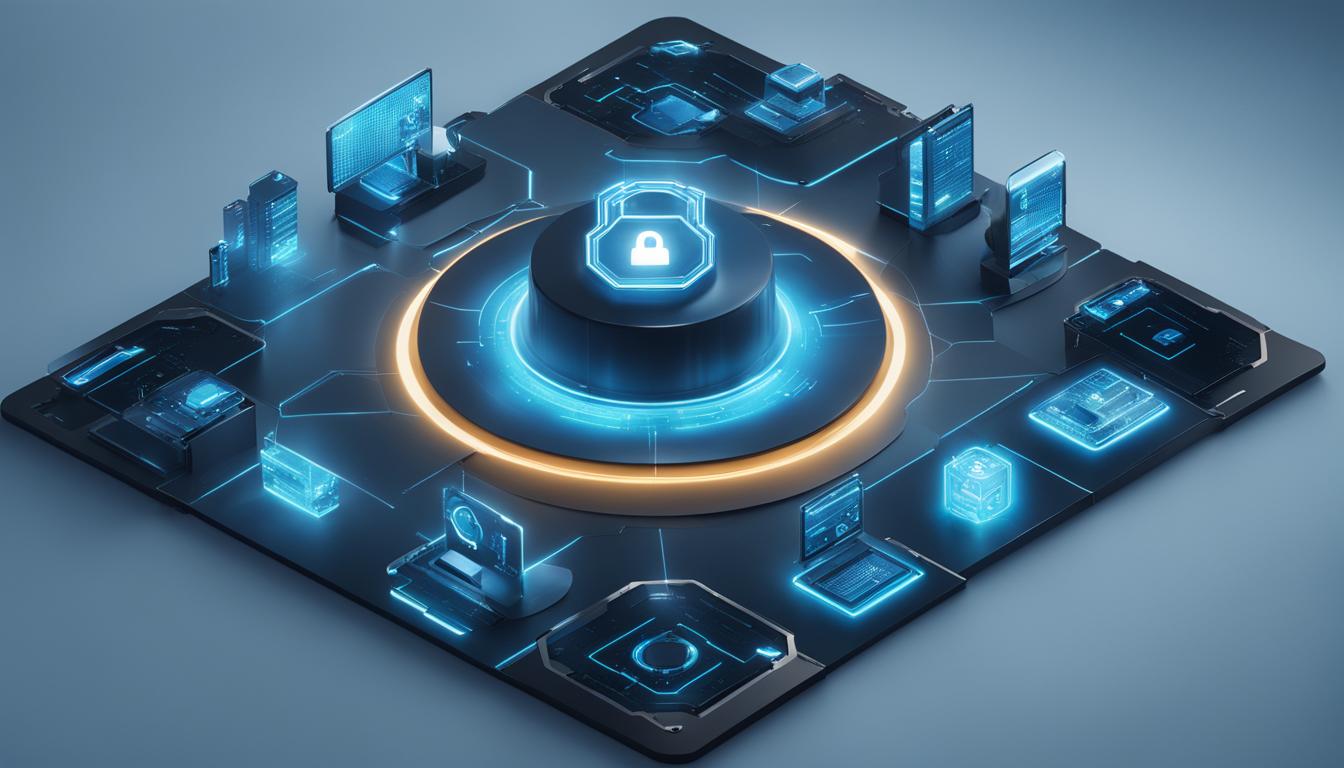In today’s rapidly evolving digital landscape, cybersecurity has become an essential component of every organization’s operations. As businesses embark on their digital transformation journey, it is imperative to prioritize cybersecurity to protect sensitive data, maintain customer trust, and mitigate potential threats.
Cybersecurity frameworks and standards provide a structured approach to managing security risks and ensuring compliance with regulations. These frameworks offer a common language and a set of best practices for security leaders across various industries and countries. By adopting these frameworks, organizations can assess their security postures, identify vulnerabilities, and implement effective strategies to safeguard their digital assets.
Within the realm of cybersecurity, several frameworks and standards have gained prominence. These include the NIST Cybersecurity Framework, ISO 27001 and ISO 27002, SOC2, NERC-CIP, HIPAA, GDPR, FISMA, and many more. Each framework addresses specific aspects of cybersecurity, catering to diverse industry requirements.
Key Takeaways:
- Cybersecurity frameworks and standards are essential in the digital transformation journey of organizations.
- They provide a common language and best practices for managing security risks and ensuring compliance.
- The NIST Cybersecurity Framework is widely recognized for assessing cybersecurity maturity.
- ISO 27001 and ISO 27002 certifications validate an organization’s cybersecurity program.
- Cybersecurity frameworks and standards play a pivotal role in protecting data and maintaining stakeholder trust.
The NIST Cybersecurity Framework
The NIST Cybersecurity Framework, established in response to an executive order by former President Obama, has become the gold standard for assessing cybersecurity maturity and identifying security gaps. This framework provides a comprehensive and flexible approach to managing and mitigating cybersecurity risk.
Organizations that adopt the NIST Cybersecurity Framework can effectively evaluate their current cybersecurity posture and develop a roadmap for improvement. By aligning with this framework, companies can ensure they are adhering to cybersecurity regulations and best practices.
The NIST Cybersecurity Framework consists of five core functions: Identify, Protect, Detect, Respond, and Recover. These functions form the basis for a proactive and adaptive cybersecurity program that can withstand and respond to the ever-evolving threat landscape.
The framework is currently undergoing its biggest update since its release in 2018, reflecting the evolving nature of cybersecurity risks. This update will enhance its applicability and effectiveness in today’s digital landscape.
Compliance with the NIST Cybersecurity Framework is voluntary; however, it is highly recommended for organizations looking to enhance their cybersecurity maturity. By implementing this framework, businesses can fortify their defenses, safeguard sensitive data, and maintain the trust of their customers and stakeholders.
ISO 27001 and ISO 27002
ISO 27001 and ISO 27002 certifications are internationally recognized cybersecurity standards that validate the effectiveness of a company’s cybersecurity program. Achieving these certifications demonstrates to stakeholders that an organization has implemented robust cybersecurity practices and controls to protect sensitive information and assets.
The ISO 27001 certification focuses on establishing and maintaining an Information Security Management System (ISMS) within an organization. It sets out the requirements for implementing a systematic approach to managing information security risks, ensuring the confidentiality, integrity, and availability of information.
On the other hand, ISO 27002 provides specific guidelines and best practices for implementing security controls based on the risks identified in the organization’s context. It covers a wide range of areas such as information security policies, asset management, access control, cryptography, physical security, incident management, and more.
While the certification process for ISO 27001 and ISO 27002 can be time and resource-intensive, it offers several important benefits. Firstly, it provides an independent and impartial assessment of an organization’s cybersecurity capabilities, highlighting areas for improvement and helping prioritize investments in security measures and technologies.
The ISO 27001 and ISO 27002 certifications offer a competitive advantage, especially when bidding for contracts or partnering with organizations that prioritize cybersecurity. These certifications serve as a trusted proof of a company’s commitment to information security and can enhance its reputation in the market.
Furthermore, achieving these certifications demonstrates compliance with global best practices and can help organizations align with various regulatory requirements, such as the EU’s General Data Protection Regulation (GDPR) or industry-specific regulations.
By obtaining the ISO 27001 and ISO 27002 certifications, organizations can enhance their cybersecurity posture and build trust with customers, partners, and stakeholders. These certifications act as a powerful differentiator, indicating a company’s commitment to protecting sensitive data and providing a secure environment.

Conclusion
Cybersecurity frameworks and standards are of paramount importance in the digital transformation journey of organizations. They serve as crucial guidance for managing security risks, mitigating vulnerabilities, and enhancing overall digital defense. By adhering to these frameworks and standards, businesses can effectively protect their valuable data, ensure compliance with regulations, and showcase their commitment to achieving security excellence.
With the ever-evolving threat landscape, it is imperative for organizations to prioritize cybersecurity in their digital transformation efforts. By embracing cybersecurity frameworks and standards, businesses can establish robust security measures that safeguard their assets and engender trust among customers and stakeholders.
Implementing cybersecurity frameworks allows companies to establish a common language and set of best practices for security leaders across industries and countries, enabling them to comprehensively assess their own security posture as well as that of their vendors. Notable examples of cybersecurity frameworks and standards include the NIST Cybersecurity Framework, ISO 27001 and ISO 27002, SOC2, NERC-CIP, HIPAA, GDPR, and FISMA.
Embracing these frameworks not only helps organizations assess, monitor, and mitigate cybersecurity risks but also ensures compliance with prevailing regulations and industry best practices. By proactively prioritizing cybersecurity, businesses can fortify their digital defense capabilities and protect against potential threats in today’s interconnected world.
FAQ
What is the role of cybersecurity frameworks and standards in digital transformation?
Cybersecurity frameworks and standards provide guidance on managing security risks, mitigating vulnerabilities, and improving overall digital defense during the digital transformation process. They help organizations protect their data, ensure compliance with regulations, and demonstrate their commitment to security excellence.
What are some common cybersecurity frameworks and standards?
Some common cybersecurity frameworks and standards include the NIST Cybersecurity Framework, ISO 27001 and ISO 27002, SOC2, NERC-CIP, HIPAA, GDPR, FISMA, and more. These frameworks and standards help organizations assess, monitor, and mitigate cybersecurity risk, and ensure compliance with regulations and best practices.
What is the significance of the NIST Cybersecurity Framework?
The NIST (National Institute of Standards and Technology) Cybersecurity Framework is a gold standard for assessing cybersecurity maturity and identifying security gaps. It was established in response to an executive order by former President Obama and is currently undergoing its biggest update since its release in 2018. Compliance with the NIST Cybersecurity Framework is voluntary but highly recommended to ensure adherence to cybersecurity regulations and best practices.
What are ISO 27001 and ISO 27002?
ISO 27001 and ISO 27002 are international cybersecurity standards that validate a company’s cybersecurity program. These certifications demonstrate that a company has mature cybersecurity practices and controls in place. While the certification process can be time and resource-intensive, it provides a point-in-time assessment of an organization’s cybersecurity capabilities and can help win new business.
Why is it important to prioritize cybersecurity in digital transformation efforts?
Prioritizing cybersecurity in digital transformation efforts is crucial to safeguard assets and maintain trust with customers and stakeholders. By following cybersecurity frameworks and standards, organizations can effectively manage security risks, mitigate vulnerabilities, and improve their overall digital defense.
Source Links
- https://www.techtarget.com/searchsecurity/tip/IT-security-frameworks-and-standards-Choosing-the-right-one
- https://www.connectwise.com/blog/cybersecurity/11-best-cybersecurity-frameworks
- https://www.bitsight.com/blog/7-cybersecurity-frameworks-to-reduce-cyber-risk
- Operational Excellence: Ensuring Competitive Edge for Saudi Arabia’s Dedicated Cargo Airline - December 19, 2024
- Marketing and Branding: Positioning Saudi Arabia’s Dedicated Cargo Airline for Global Leadership - December 18, 2024
- Strategic Partnerships: Building Saudi Arabia’s Dedicated Cargo Airline - December 17, 2024






